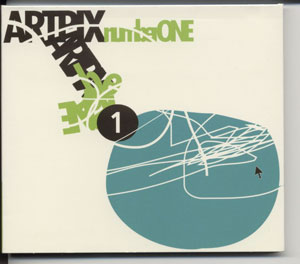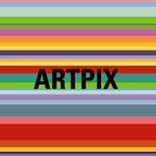Since 1998, Houston-based ArtPix has quietly, steadily thwarted the prevailing wisdom on CD-ROM magazines (which is that they are doomed to failure), producing a solid, if small, repertoire of six publications in as many years.
Since 1998, Houston-based ArtPix has quietly, steadily thwarted the prevailing wisdom on CD-ROM magazines (which is that they are doomed to failure), producing a solid, if small, repertoire of six publications in as many years.
Their latest disk documents DiverseDialogues, an ongoing project of Houston’s DiverseWorks Art Space. This new DVD, featuring video from 19 projects which were developed and performed at DiverseWorks between 1994 and 1998, is a straightforward archival project that’s specific to Houston. But ArtPix’s past disks have run the gamut from documentation to projects featuring international artists — projects that are curated and designed for the CD or DVD-ROM format, which allow for more interaction from users. Indeed, as far as curating goes, ArtPix seems to go where the winds take them, producing an eclectic array of projects with little editorial continuity, but which are all compelling to different degrees.
Like many such efforts, ArtPix originated as a response to the decline in NEA funding for individual artists. ArtPix was formed specifically to support and document artists that might otherwise get overlooked. At the time of the organization’s founding, CD-ROMs were a much-discussed format for new media, through it was presumed that streaming Internet would quickly supplant them. Founders Susan O’Connor and Fredericka Hunter decided that the experimental format of the CD-ROM was appropriate to the experimental nature of the projects they documented, knowing that their audience would probably be small.
Since their first release in 1998, the ArtPix disks have naturally gotten far more sophisticated as technology has progressed. Looking at the first couple of projects now, the technology is almost sweetly modest for an audience accustomed to flash animation and high-resolution images. At the time, though, ArtPix programmers were pushing the envelope as to what was technologically possible. Without the video and sound editing software that is standard with any Mac today, the first couple of ArtPix projects were incredibly labor intensive, and were programmed almost completely by hand.
If the technology seems old-fangled, the art itself featured in the early disks seems mainstream now — it’s hard to remember that Rosangela Renno, who represented Brasil in the last Venice Biennal, was not well-known in 1998; nor was Polly Apfelbaum (who is featured in David Pagel’s virtual exhibition on the second disk). These artists, along with Hale Tenger and Marina Rosenfeld, have gone on to make names for themselves elsewhere; and thus the ArtPix disks 1 and 2 are today an interesting document of some of their earlier efforts.
After the third disk, which presented artists from New Zealand (because Molly Cumming, Project Director for ArtPix, was there at the time), the organization veered off in another direction, its so-called “Notebook” series. To date, ArtPix has produced two different series. The first three issues were interactive CD-ROMS which included artist projects and group exhibitions. All utilized text, video, gaming devices, and music. The latest release, DiverseDialogues, is also in this series. ArtPix Notebooks (disks four and five) feature works by Billy Sullivan and Robert Whitman, respectively.
Both of the Notebook projects archive information that was in danger of getting lost (as is also the case with the DiverseDialogues videos). In the case of the Billy Sullivan disk, Sullivan is an artist and a friend of Hunter who is known for paintings and drawings, but his ArtPix disk presents snapshots of people in New York that Sullivan has taken over the course of several decades. The unsystematic planning of the ArtPix content means that whatever is deemed interesting and is available to the organizers via their network of contacts is what gets produced.
For better or for worse, cohesive editorial may be around the corner for ArtPix: in the wake of the Robert Whitman project, the organization is planning a series of DVDs documenting early performance art and dance. The next release will be of Tricia Brown video. For the first time, ArtPix is creating a series of interrelated projects, a sort of encyclopedia of the thinking of an era that’s specific to these performers and dancers. According to Hunter, ArtPix has found an area that is not getting much attention elsewhere, and where it has wonderful access to materials. “Ultimately, [ArtPix] is for students and for history. The older projects are still amazingly fresh looking, and are the predecessors of so much we take for granted now,” says Hunter.
If ArtPix has veered from its original mission of presenting new work by emerging artists with these more recent archival projects, it is partly a case of organically following a different path when it becomes available, and partly a case of simple logistics. It is far easier and less expensive to produce a DVD of archival video than an interactive CD or DVD-ROM of new material. Such is the case with the DiverseDialogues DVD, which was originally conceived as an interactive CD-ROM, but worked better as video clips on a straightforward DVD, with an accompanying booklet. Although users lose the navigational ability of CD-ROM, ArtPix has found that people want to go straight to the meat anyway — DVDs lessen the options, but people appreciate the clear-cut presentation of material. DVDs can also be played on a TV as well as on a computer. Admittedly, it takes a bit of time and effort to sit in front of a computer monitor and watch an ArtPix disk, but like gallery hopping, the payoff comes when you find that diamond — or old video footage — in the virtual rough.
Images courtesy ArtPix.
Rainey Knudson is the founder and editor of Glasstire.





